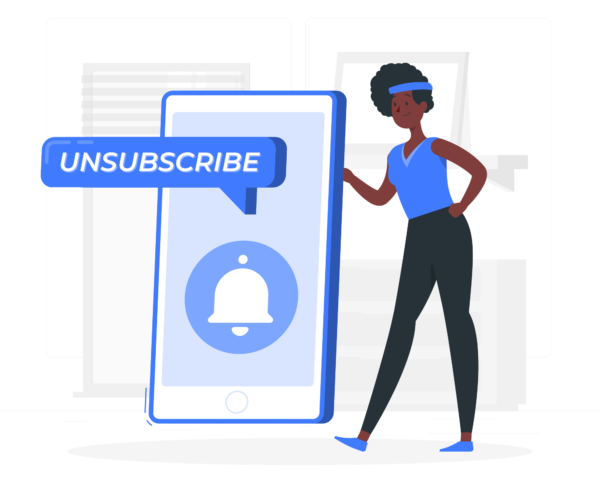We have all been there: you start reading an email newsletter and its just not a good experience, so then click the unsubscribe button a few days later. It is not intentional- we are just too busy to keep up with the content. But when users continue to unsubscribe from your emails, it could mean that there is something wrong with what you are sending out.
This blog will explore seven different ways to figure out why your subscribers are becoming disengaged and how to fix the problem before it’s too late!
Consider The Frequency Of Your Email
According to Ros Hodgekiss, design community manager at Campaign Monitor, one of the most common reasons why users unsubscribe from emails is that the marketer either overestimates or underestimates how often subscribers want to hear from them.
Consider how often you email your subscribers: are you making things easier by sending them more emails? Or do their inboxes groan under a pile of messages from you every day, week, or month? It may be time to rethink how often you send out new content and make sure people have an easy way to opt out of future mailings if it’s too much for them.
You can have your subscribers submit their preferences when they prefer to receive emails after subscribing or any time after that.
The Content Isn’t Relevant To Them
Sometimes unsubscribing is a result of the content being too industry-specific and not relevant to the reader. If you write about interesting topics that are relevant to your readership, they will be more inclined to read them.
The good news is there’s an easy fix for this one: just ask your audience what kind of content they want to read. For instance, ask on social media or in surveys what topics interest them, and you’ll know precisely how best to serve your audience.
They Can’t Properly View Your Emails
If spam filters are blocking parts of your emails, or the email client they use to access their inbox doesn’t render HTML correctly (e.g., Outlook or Apple Mail), then you may not be able to convert them into customers. You can test this with a tool like Mailchimp’s Email Preview Feature or Litmus’ Web-based Browser Test Tool again and see if there are any problems rendering images in your emails.
Assess The Value Of Your Emails
There are a few key metrics that you need to watch: your open rate, clickthrough rate, and unsubscribe rates. The first two measure the interest in what you’re sending out, while the latter is just as important because it measures whether or not they’ve had enough of your content and opted out on their own accord.
If someone’s opening your emails but clicking through less often than before, this could indicate them having grown tired of reading about your latest blog posts. This may mean that there needs to be more variety when you email people – maybe some interesting videos included sporadically in place of links only. You’ll want to keep an eye on these statistics so you can determine how things have changed over time (and if you need to make adjustments).
Confirm That All Users Actually Signed Up For Emails
Confirm that all users actually signed up for emails. If they didn’t, then there’s no way to know if it was intentional or not. Some providers do an excellent job of confirming intent before adding people to the list, but others don’t care and will add anybody who clicks “Yes” without really checking first. With this problem fixed and only subscribers getting unsubscribed, you’ll know just how many customers are happy with your company and their email service provider.
Quickly Collect Customer Feedback
We recommend that you start by collecting feedback from your customers in a way they’ll actually contribute. We mean that rather than asking for feedback on a current issue (which people will often not be able to answer), ask them what their opinion is about something new and exciting.
Doing this helps create the dialogue and rapport necessary for successful customer service down the line. When issues do arise, it’s much easier to get valuable information from unhappy customers if they feel like you value their opinions. So make sure you’re keeping tabs on all comments left online through social media or email and respond promptly with kind gestures when appropriate—you might even want to send flowers as a thank-you card.
Check Social Media For Customer Relations Issues
If a customer posts about your company on social media and does not sound like they had an enjoyable experience, you need to address it. The first thing that needs to be done is to investigate the situation by finding out what happened during their interaction with your team member or in-store associate.
Social listening programs can help with this by providing data about how customers feel on certain topics to be proactive if something like this happens again down the line, so investing in one could save them from another cancellation fiasco.
What Next?
We’ve given you seven ways to identify the reasons for unsubscribes and fix the problem. Which of these tips have you tried? If none of them are working, we can help! Our team has helped companies increase their open rates by delivering relevant content in a timely manner while using appropriate marketing channels like email.
To get started on your campaign, contact us today or schedule an appointment with one of our experts who will work with you every step of the way to make sure that all aspects of your marketing strategy are successful.








